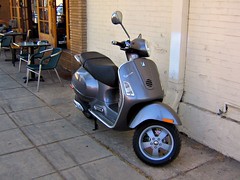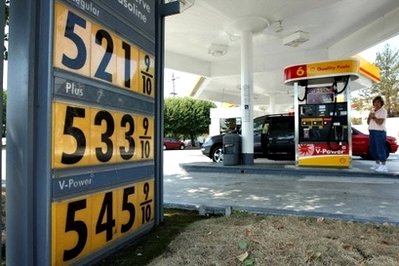Living the low-car lifestyle

Posted January 17, 2012 at 1:24PM
We know it’s just a matter of time before gasoline prices go up again, right? And another matter of time before they go up yet again. The era when low-cost driving made far-flung living – 30-minute car trips to work or your doctor’s office, 20 minutes to the mall (plus another 10 parking and getting inside) or your kid’s soccer game – easy and attractive is fading fast.
Most folks I know outside of my work circles don’t realize it and don’t particularly care, other than maybe to share gas-price stories at a dinner party for a few minutes, in the same way they might share weather stories, before moving on to the next topic. But we’re all going to have to face the music sooner or later. So what then?
Scott Doyon, writing on his group’s blog PlaceShakers and NewsMakers, has some answers. He reports that the subject came up in a newspaper op-ed recently, where a AAA representative urged readers to “prepare” for price hikes, perhaps significant ones, without saying how, exactly. But Scott, a fellow traveler in the world of urbanism, draws from his own experience to remind us that adjusting to the dawning era of significantly higher energy prices doesn’t have to mean less convenience or other sacrifice. Indeed, it can mean more abundance of the things that really matter in life.
Scott lives what I like to call a low-car lifestyle. But, in reality, he didn’t so much choose it consciously as he stumbled into it while making other life choices:
“In 1996 I was a young newlywed shopping for a place to put down roots. Our situation was simple: We wanted an old house and we were relatively broke. So, while we did end up finding what we wanted, it wasn’t exactly where we wanted, in that its surrounding neighborhood was something best described as ‘sketchy.’
“That’s okay, we rationalized. Our block was still better than a couple blocks over. And the schools? We didn’t need to think about that. We didn’t even have a child, much less one of school age. A lot can change. We’d cross that bridge when the time came.
“Time went by and things did indeed change. Other folks, as young and oblivious as we were, began moving into the neighborhood. They spent money, fixing up houses and launching local businesses. We had a daughter and pretty soon we started seeing kids all over.”
And then things began to get even more interesting:  with more kids and concerned parents in the neighborhood, the schools got better; families began to improve the streets and neighborhood parks; some pubs and restaurants moved in. Rapid transit was a half-mile away, and that helped, too. The family's daily lifestyle began to involve as much or more walking as driving.
with more kids and concerned parents in the neighborhood, the schools got better; families began to improve the streets and neighborhood parks; some pubs and restaurants moved in. Rapid transit was a half-mile away, and that helped, too. The family's daily lifestyle began to involve as much or more walking as driving.
And they traded in their second car for a Vespa scooter.
Granted, it apparently took some time for all these changes to mature. And Scott has the additional luxury of being able to work from home. But the upshot is that Scott calculates that his family has to spend only about a third of what the average American family spends annually on gasoline.
Gas price problem solved. And along with a reduced financial burden, Scott reports having a lot more time to spend with family and friends. (Our mutual friend, Original Green guru Steve, has a similar – and nicely mapped, by the way – story to tell.) Scott’s not just a good but a very good writer, and I love his ending to the post, linking quality of life to quality of place:
“Long story short, we consider ourselves very fortunate, but I realize that a story predicated on dumb luck and serendipity is, by definition, not directly transferable. So before anyone feels the need to respond with a snarky ‘How nice… for you,’ let me be clear. The true lesson here is that, since birth, many of us have been indoctrinated into a program of American Dream-like desires that may, in practice, bear little resemblance to the things that actually bring us satisfaction and joy. So long as we continue to pursue them, making decisions as though the cost of energy doesn’t matter, we’ll increasingly find ourselves at the cruel mercy of fluctuating prices.
“Instead, try this: The quest to use less gas will often lead you to compact, diverse, walkable mixed-use places offering a wholly unexpected quality of life. They may differ from what you’ve always pictured. They may offer fewer square feet per dollar. They may take a lot of work in partnership with others. But they will undoubtedly deliver on something often promised and rarely fulfilled: Newfound levels of personal freedom.
“What’s that worth to ya?”
Read it all here.
Move your cursor over the images for credit information.
Please also visit NRDC’s Sustainable Communities Video Channel.
